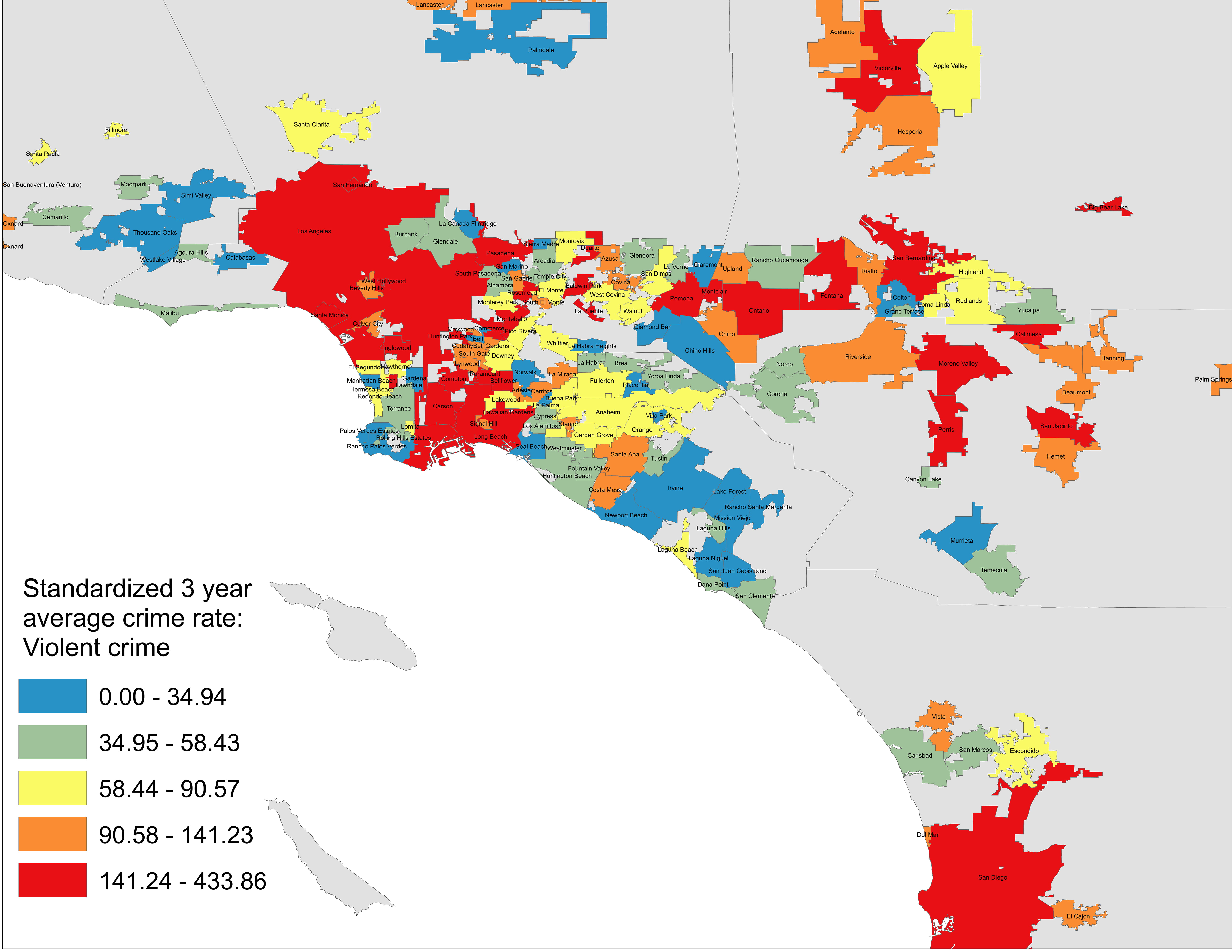UCI researchers forecast lower 2017 violent and property crime rates in much of SoCal
Report also provides city trends, comparisons and socio-demographic information

Irvine, Calif., Feb. 14, 2017 – Researchers at the University of California, Irvine project double-digit reductions in both violent and property crimes across much of Southern California for 2017. Violent crime is estimated to drop by 21 percent in 82 percent of cities, and property crime is expected to decrease by 11 percent in 79 percent of cities.
These encouraging predictions come from the third annual Crime Report for Southern California, authored by John Hipp and Charis Kubrin, UCI professors of criminology, law & society, and produced by the School of Social Ecology’s Irvine Laboratory for the Study of Space & Crime.
Hipp developed mathematical forecast models using 2000-2015 data from the FBI’s Uniform Crime Reporting Program for 196 cities with populations of at least 4,000 in Imperial, Los Angeles, Orange, Riverside, San Bernardino, San Diego and Ventura counties. Violent crimes are defined as homicide, aggravated assault and robbery, while burglary, motor vehicle theft and larceny are classified as property crimes.
“We employed a novel approach to calculating crime rates in order to solve the inherent problem of comparing changes in crime rates across cities of different sizes,” Hipp said. “Computing the crime rate average over a three-year period, from 2013 to 2015, smooths the random year-to-year fluctuations. The city-level change in overall violent or property crime rates is figured according to the difference in these standardized rates.”
The report provides historical and recent comparisons of crime trends throughout the region, as well as city-level socio-demographic characteristics – and insight into how these affect crime rates.
“Criminologists are well aware that cities with certain traits typically have higher rates of crime,” Kubrin said. “Our statistical models also take into account socio-demographic attributes such as average household income, unemployment rate, residential stability, number of immigrants and population density to determine what we call the ‘adjusted value,’ which shows the level of crime above or below what would be expected for a city with that particular set of characteristics.”
About the University of California, Irvine: Founded in 1965, UCI is the youngest member of the prestigious Association of American Universities. The campus has produced three Nobel laureates and is known for its academic achievement, premier research, innovation and anteater mascot. Led by Chancellor Howard Gillman, UCI has more than 30,000 students and offers 192 degree programs. It’s located in one of the world’s safest and most economically vibrant communities and is Orange County’s second-largest employer, contributing $5 billion annually to the local economy. For more on UCI, visit www.uci.edu.
Media access: Radio programs/stations may, for a fee, use an on-campus ISDN line to interview UCI faculty and experts, subject to availability and university approval. For more UCI news, visit wp.communications.uci.edu. Additional resources for journalists may be found at communications.uci.edu/for-journalists.